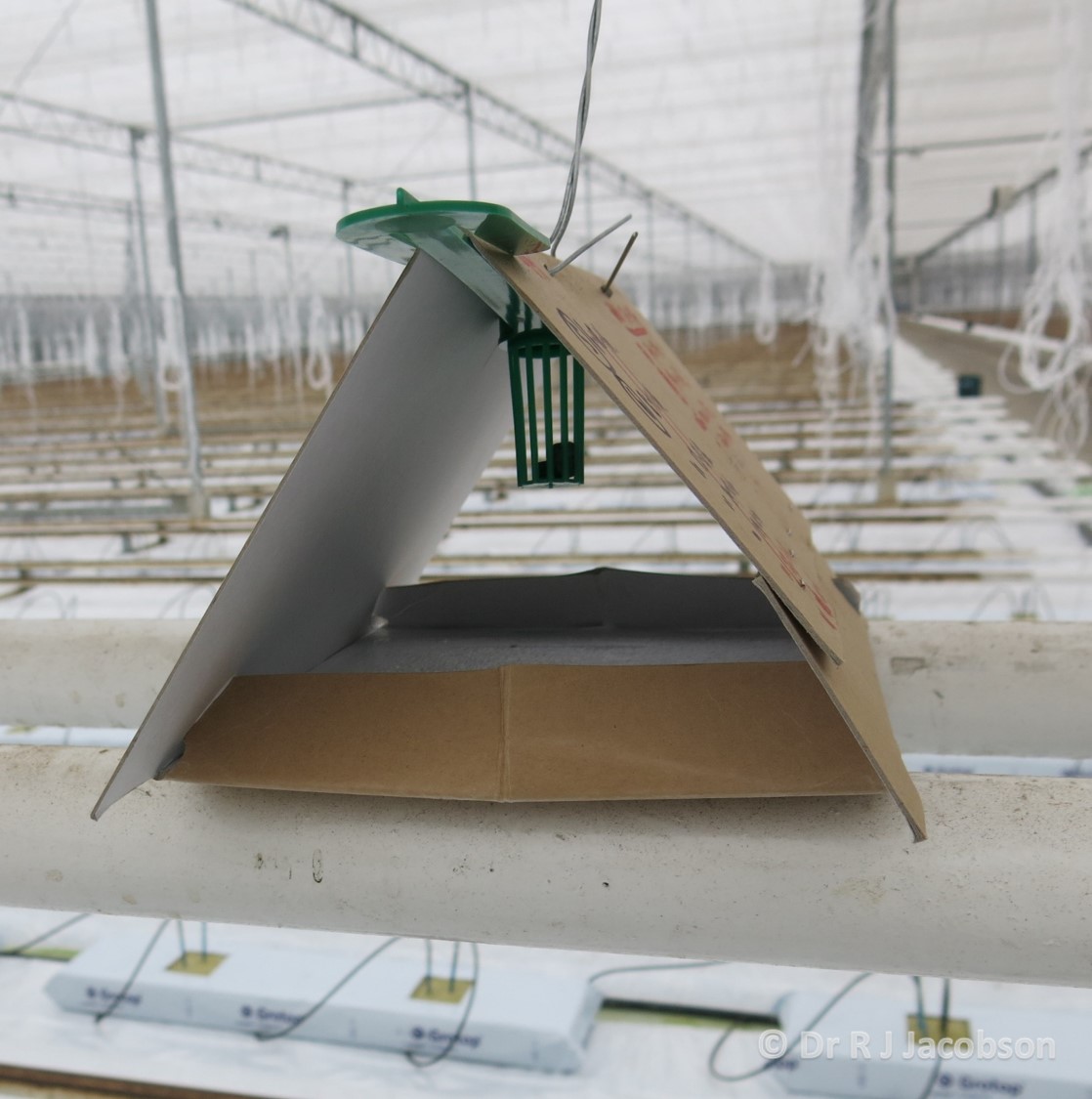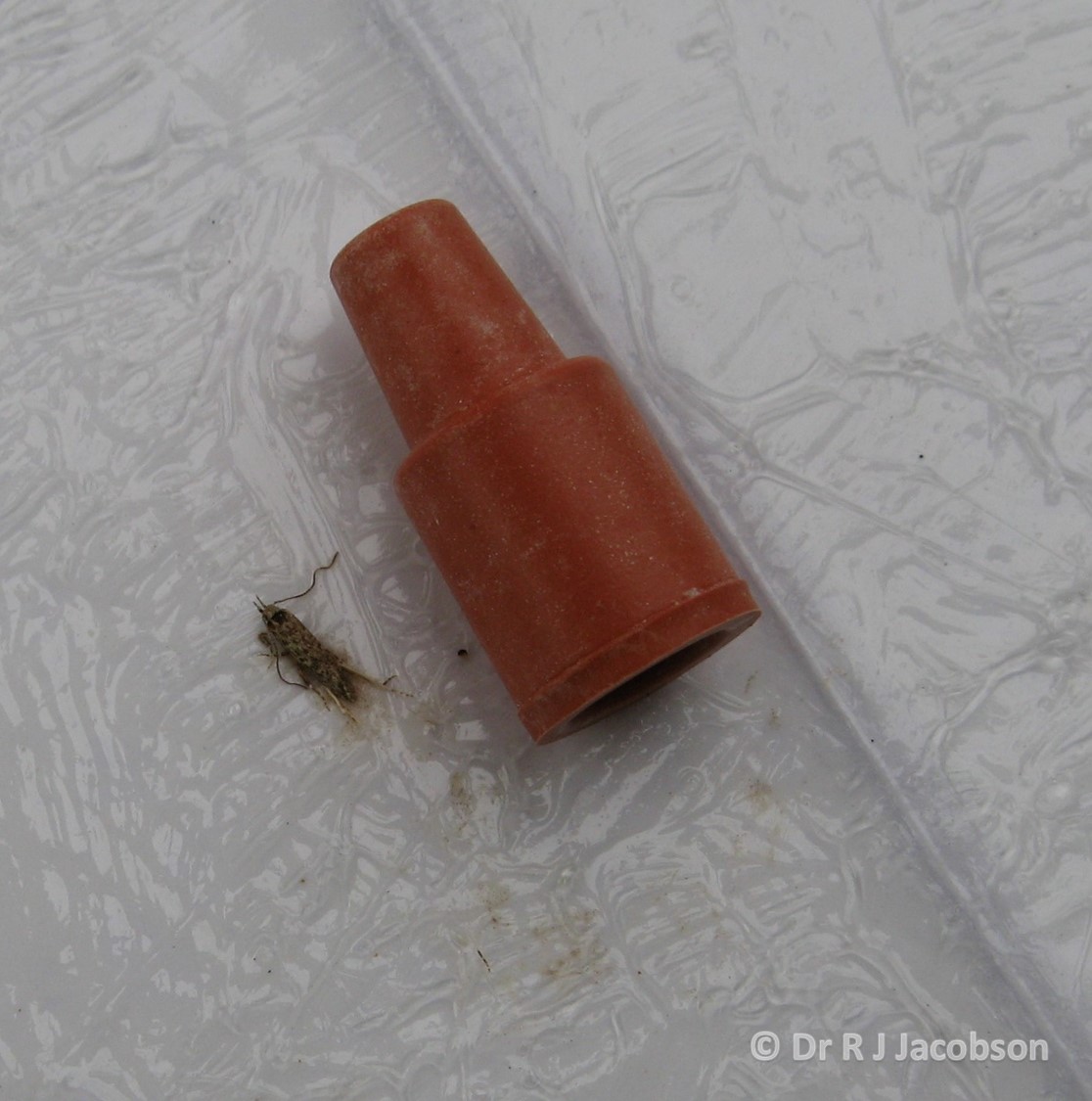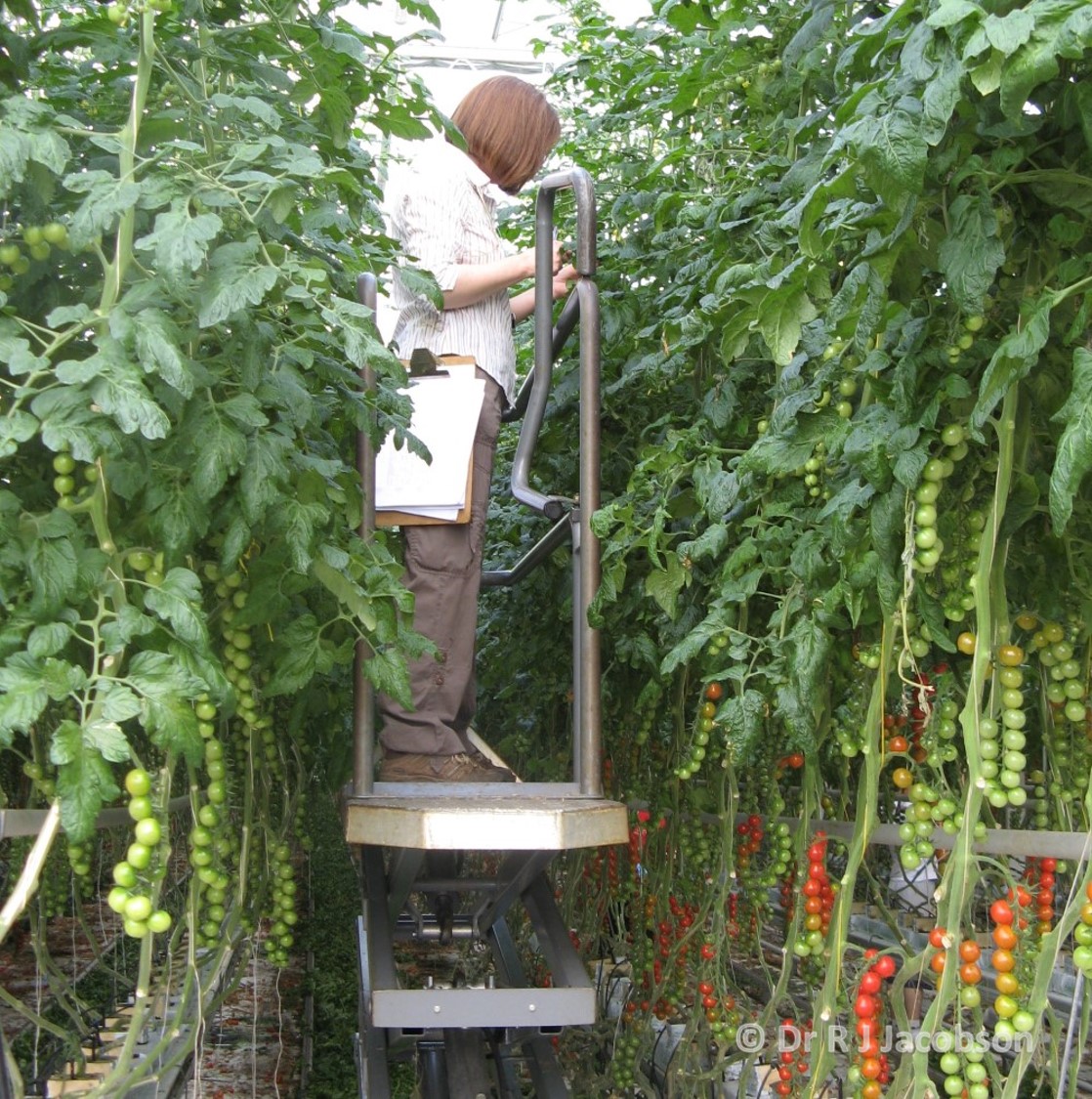Please click here to access the main AHDB website and other sectors.
- Home
- Knowledge library
- Monitoring Tuta absoluta populations in crops
Monitoring Tuta absoluta populations in crops
It is essential that growers have accurate, topical monitoring information on which to base decisions throughout the growing season. This can be gained by a combination of trap and plant inspections. Read about monitoring Tuta absoluta populations on this page.
A pheromone-based trap used prior to planting
Sex attractant
Female Tuta absoluta produce a sex attractant pheromone that has been synthesised and used as a very effective lure in sticky traps, often detecting males before there is any other evidence of the pest in the glasshouse.
When to use traps
The traps are particularly useful immediately prior to planting or in the early stages of the crop.
When not to use traps
The traps are ineffective when using the mating disruption technique because the air in the glasshouse is already saturated with the pheromone.
A trap for Tuta absoluta

Image © Rob Jacobson Consultancy Ltd.
An example of a pheromone lure as used in traps
Life of the lure
The lures have a limited life and should be replaced at 5–6-week intervals. The initial release of pheromone is relatively large and this is reflected in the size of the catch. Thereafter, the release declines progressively and the size of the catch may follow the same pattern.
Measuring population trends
Each time the lure is replaced there will be a surge in both the quantity of pheromone released from the trap and the size of the catch, even if the size of the insect population remains constant. As a consequence, the data collected from the traps can be misleading when used to monitor population trends and the effects of insecticidal treatments. One solution is to have multiple traps, replace them in sequence and then average the counts.
Lure used in a Tuta absoluta trap

Image © Rob Jacobson Consultancy Ltd.
Monitoring based on plant inspections
Counting active Tuta absoluta mines on the plants is more labour intensive than use of pheromone traps but provides more reliable information.
Counting procedure
This should be tailored to each individual site, taking into account the type of crop, size of glasshouse and any other monitoring systems that are already in place. A typical system would have at least 24 sample stations per hectare with 10–12 plants at each station. Numbers of active mines are counted at 7–21-day intervals depending on the time of year, speed of population growth and control measures being taken.
A crop worker monitoring a tomato crop for pests

Image © Rob Jacobson Consultancy Ltd.
Useful links
Read about an outline IPM strategy for Tuta absoluta
How to look out for signs of Tuta absoluta in your crop
Author
The content on this page was authored for AHDB by Dr Rob Jacobson (Rob Jacobson Consultancy Ltd).
Topics:
Sectors:
Tags:

